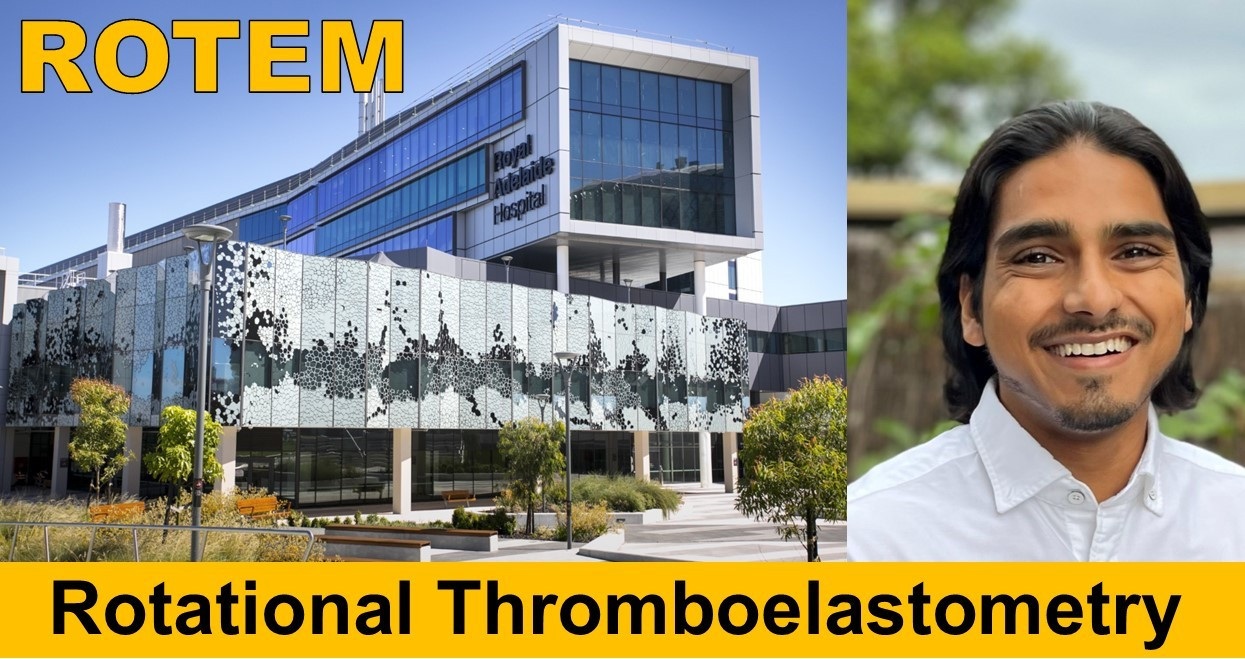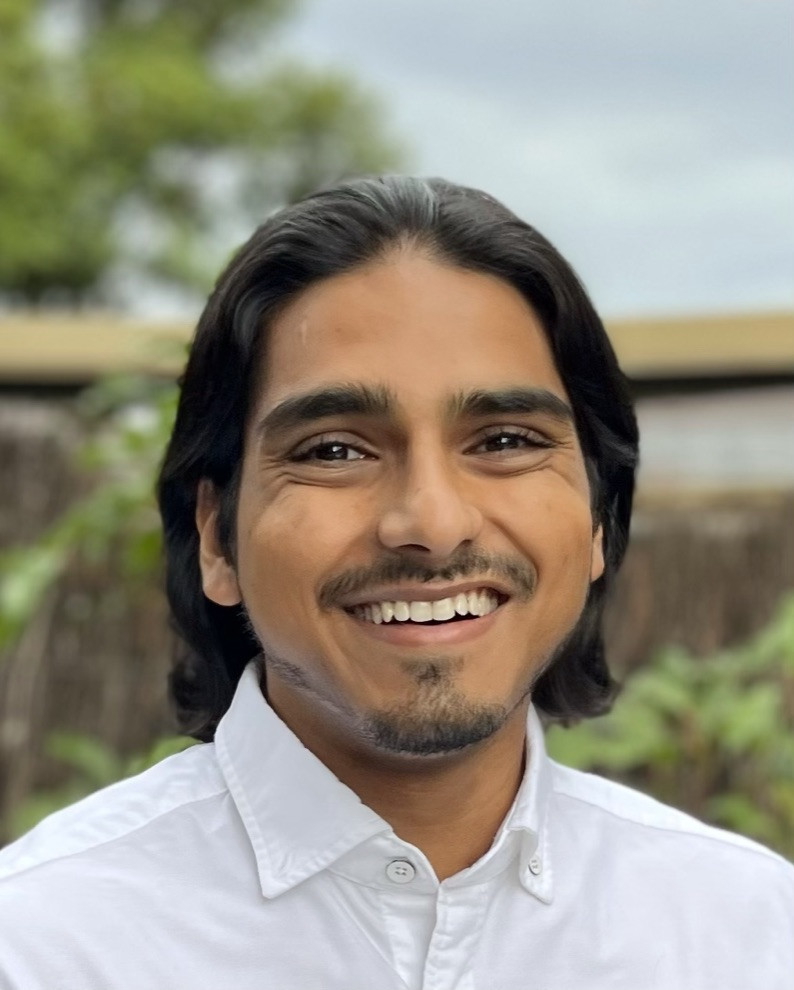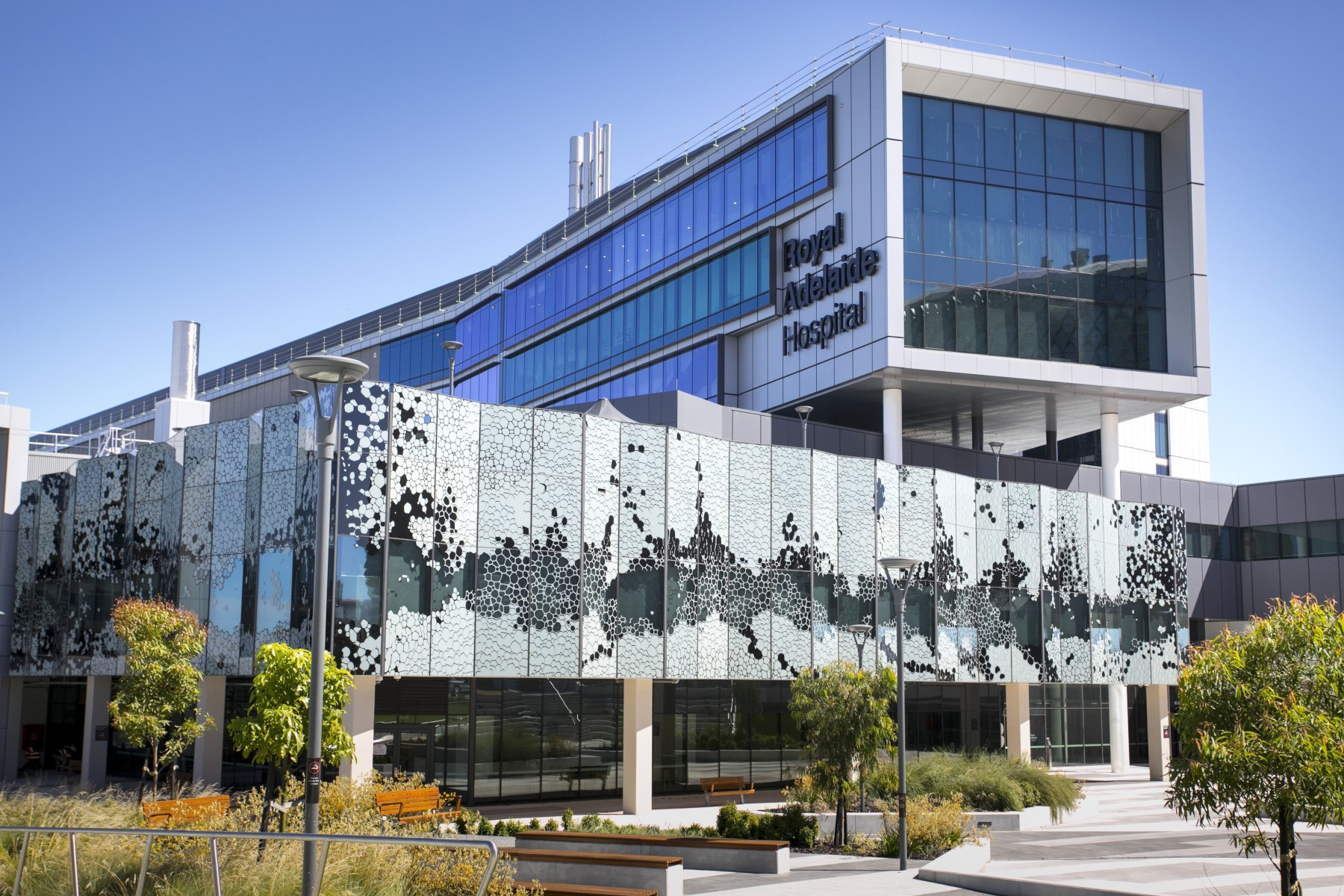Could rotational thromboelastometry offer new treatment targets for traumatic brain injury and chronic subdural haematoma?
Mr Abhiram Hiwase provides an update on his latest research investigating ROTEM

Mr Abhiram Hiwase provides an update on his latest research investigating rotational thromboelastometry (ROTEM), a measure of a patient’s blood clotting ability, to identify potential new treatment targets for the management of TBI and chronic subdural haematoma. Abhiram was awarded the inaugural John Crowley Scholarship in 2022, established as a result of a generous bequest from the family of John Crowley to support cutting-edge neurosurgical research. John Crowley was in his final year as a nursing student at the RAH when he tragically passed away from a head injury sustained as the result of a motorcycle accident. Read Mr Hiwase’s update below:

In 2022, following my penultimate year of MBBS at the University of Adelaide, I had the opportunity to commence a research project under the guidance of national leaders in neurotrauma. While undertaking this research, I also engaged in part-time clinical placement at the Royal Adelaide Hospital neurosurgical department.
This combined research and clinical experience allowed me to critically reflect on the current evidence base and tools employed in the management of neurotrauma. I came to understand that routine blood clotting tests, or coagulation assays, have significant limitations. Routine coagulation assays only describe the initial period of blood clotting, in which less than 5% of one of the most vital clotting agents, thrombin, is formed. Detailed understanding of coagulation in head injury carries great significance, as brain injury itself can alter the coagulation state through mechanisms undetected by routine coagulation tests. In light of the limitations to routine coagulation assays, I was drawn to investigate an alternative measure of clotting – rotational thromboelastometry, also known as ROTEM. What separates ROTEM from standard coagulation assays is that rather than only quantifying the ‘ingredients’ that contribute to blood clotting, ROTEM measures how these components interact in the dynamic process of clot formation.
The greater detail provided by ROTEM has translated to clinical improvements in cardiac and liver surgery – however, application of ROTEM in the setting of traumatic brain injury (TBI) remains an area of limited evidence. Our team hypothesised that using ROTEM in patients with TBI may identify novel treatment targets.
To evaluate this, our group (alongside research teams in the Royal Adelaide Hospital trauma department and intensive care department) designed a prospective observational study. In this study, patients presenting to the Royal Adelaide Hospital emergency department with traumatic intracranial haemorrhage received a ROTEM test alongside routine standard of care. We then correlated clinical outcomes with the ROTEM data. This research was graciously supported by the Neurosurgical Research Foundation.

Our pilot period ran between February-August 2022 and revealed several interesting findings. We found that ROTEM and standard coagulation assays disagreed in up to 30% of patients, and that ROTEM strongly predicted lethal head injury. This raises the question - does ROTEM identify patients with abnormal blood clotting, which we would otherwise miss in our standard practice? Going forward, we aim to identify the specific pathological processes associated with lethal head injury that ROTEM is able to detect and determine whether these can be utilised as a therapeutic target or prognostic tool.
Current parameters quoted in ROTEM guided treatment algorithms have been derived from evidence related to massive bleeding from extracranial injury. Although important, this is not an outcome relevant to the majority of patients with isolated TBI – instead, we are interested in the outcome of a relatively small volume bleed in a very critical location. The parameters that predict traumatic intracranial haemorrhage or expansion of intracranial haemorrhage are poorly described. We hope that in continuing our research, we may define prognostic thresholds for the TBI cohort, and thus contribute to the development of a TBI specific targeted coagulopathy management algorithm.
Our pilot data has also identified results that challenge the conventional interpretation of ROTEM data. Typically, a low ‘lysis’ value is thought to describe blood that is ‘sticky’ and prone to clotting. However, contrary to this dogma, we found that low ‘lysis’ was associated with large volume intracranial bleeding and progression of bleeding – a result one would expect if the blood was ‘thin.’ This finding may have significant implications on how clinicians interpret ROTEM and is an area we wish to further study. In June of this year, we aim to pair ROTEM tests with an extended battery of alternative lysis markers to better understand this phenomenon. Describing this controversy served as the foundation for my Honours thesis, which was awarded dual Dux for the Bachelor of Health and Medical Sciences Honours cohort of 2022 overall, and for the medical and surgical specialities cluster. We aim to present this research at international research conferences over the coming year.
In addition to our focus on the management of acute TBI, our group is also researching coagulopathy in elderly patients with a subacute form of head injury known as chronic subdural haematoma. The Neurosurgical Research Foundation have graciously extended their support for this research, and we aim to commence recruitment for this study by April 2023.
Through my clinical and research experience, I have come to appreciate that there is room for current clinical practice to be optimised, and that research efforts can assist with this, potentially improving TBI patient outcomes. For this reason, I decided to apply for a PhD program to advance my TBI specific subject knowledge and skills in data science and clinical research. I hope that in future this will help me bridge the fields of pre-clinical research, data-science, and clinical medicine to ultimately improve TBI patient outcomes.
My ultimate goal upon completion of my studies is to pursue a dual clinical and research position. Ideally, as a public neurosurgeon whose clinical practice is specialised in dealing with tumours and trauma; with research that focuses on addressing the 'gaps' in knowledge that appear during the management of patients with traumatic brain injury and central nervous system tumours. The PhD program officially started in February this year, and I have been extremely grateful for supervision so far from A/Prof Frances Corrigan, Dr Adam Wells, A/Prof Renee Turner and A/Prof Benjamin Reddi.




